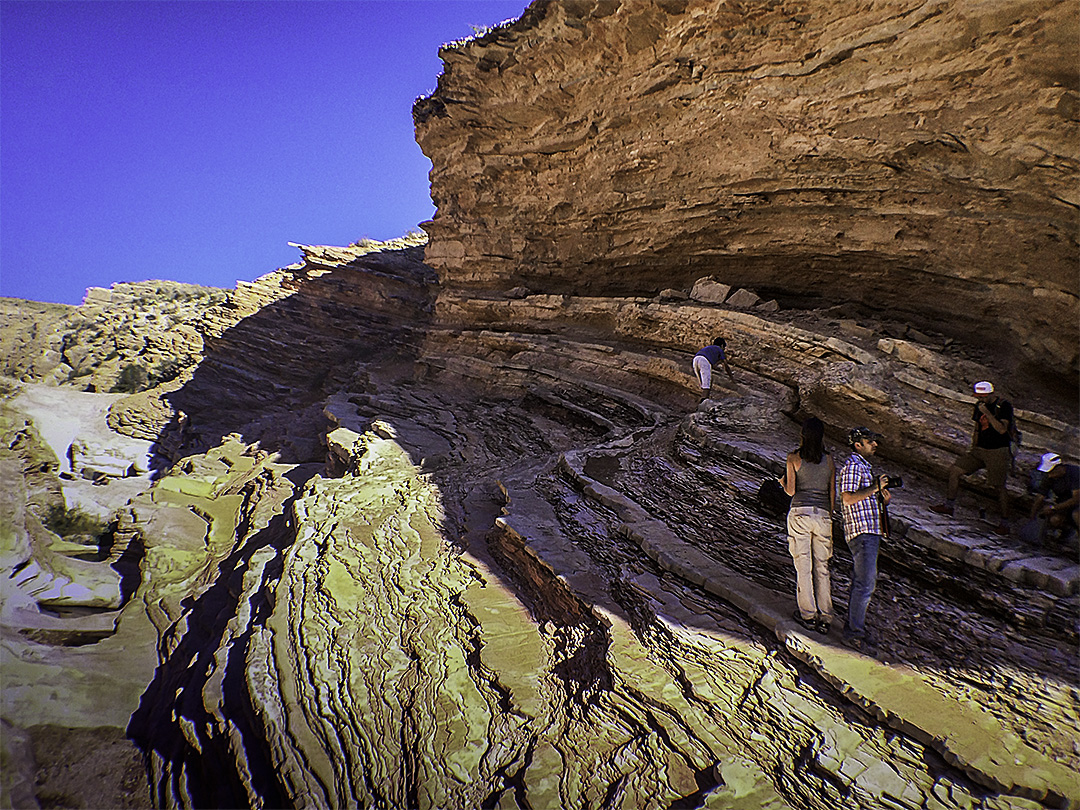The Cairngorm mountains form a large and high mass of land in the north east of Scotland and contain many of the country’s highest peaks. Popular with walkers they are protected both for their unique habitats (they are home to ptarmigan, mountain hares and many rare birds and plants) and for the much-modified ancient rocks which created those habitats.
Cairngorms – The Broader Geological Setting
Scotland’s geology is complex and the countryside bears the imprint of a series of earth-shaping events going back thousands of millions of years. Continental collision and continental break up, ice ages and warmer periods have all, at various stages, contributed to the landscape which we see today. The Cairngorm mountains are old but not the oldest rocks: they bear the imprint of deep-earth processes and of long and complex processes of erosion.
The Cairngorms are made of granite, a hard and coarse-grained rock which forms in magma chambers within the earth, cooling slowly over a very long period before being exposed at the surface by erosion. Granite and related rocks occur throughout Scotland, from Dumfriesshire to Shetland, having been emplaced in a number of significant episodes of mountain building (McKirdy et al).
Granite is hard and in Scotland it is the granite ranges of the Cairngorms and the Nevis Range which provide the highest of Scotland’s peaks – including Ben Nevis itself, Ben Macdui, Cairngorm and Braeriach. Most were intruded into ancient metamorphic rocks of between 600-1200 million years old (Baird) and in some places, the contact between the granite and the rock into which it is intruded (country rock) can be clearly seen.
The Origin of the Cairngorm Granite
The Cairngorm granite which is exposed at the surface today is ancient, having been formed over 400 million years ago during a period of continental collision (McKirdy et al). A vast mass of rock deep within the earth’s crust melted and rose towards the surface like a huge bubble, forcing its way into the overlying country rock.
The magma did not reach the surface but stopped approximately six kilometres short, where it remained and solidified over a period of millions of years. It took many millions more for the immense layer of overlying rock to be stripped away by erosive processes, leaving the resistant granite as a high mountain plateau (British Geological Survey/Scottish Natural Heritage).
Cairngorm – The Effects of the Ice Age
During their lifetime, the Cairngorms have been exposed to many periods of extreme cold followed by warming and their present form has been affected by these repeated episodes of glaciation. Indeed these will have been major contributors to the removal of the six km or so of overlying rock.
Because each period of glaciation removes the evidence left by the previous one, the current landscape of the Cairngorms mainly reflects the impact of the most recent glacial period, which we call the Ice Age. This lasted for many thousands of years, peaking at around 18,000 years ago. By around 13,000 years ago the ice appears to have vanished from the Cairngorms (BGS/SNH, McKirdy et al).
The power of the glaciers in significant and large amounts of rock were removed. The glaciers were responsible for carving out the deep, steep-sided valleys such as Glen Avon, Gleinn Einich and the Lairig Ghru which cut into the Cairngorms massif, providing access routes for walkers. Many contain lochs which occupy hollows carved by glaciers and dammed by glacial debris (moraines).
As well as the glacial valleys, other major glacial landforms visible in the Cairngorms include the deep bowl-shaped features known as corries, often separated by steep ridges. These usually occur on the northern and eastern faces of the mountains, reflecting the effects of shade in allowing the ice to persist.
Minor glacial landforms also occur, though are less obvious. The typically ‘lumpy’ landscapes of the deep glens and slopes are often the remains of eroded glacial deposits from rivers which flowed alongside or under the ice; while vast quantities of meltwater from the glaciers carved narrower channels, depositing significant quantities of gravels and other materials.
Cairngorm – Subsequent Modifications to the Landscape
The end of the last glaciation wasn’t the end of the story: the agents of ice and water continued to modify the Cairngorms. Along with the older, deep-earth forces, they have contributed to shaping the fragile and precious landscape which we see today and which is recognised as valuable and protected by its designation as a National Park.









